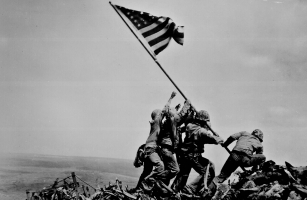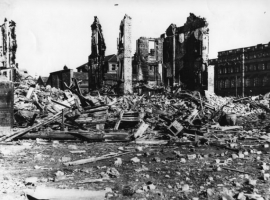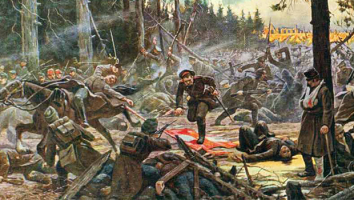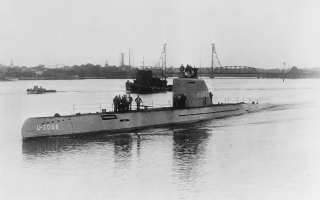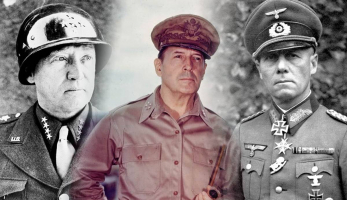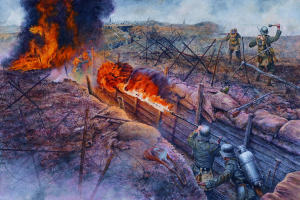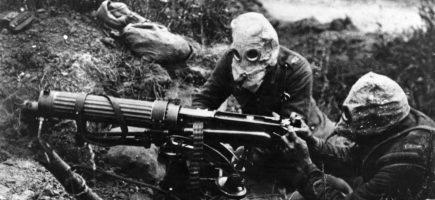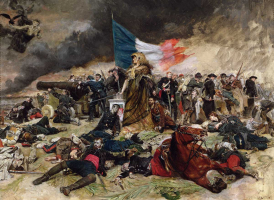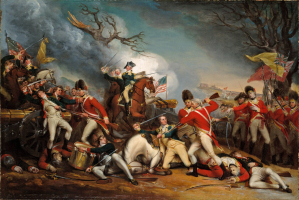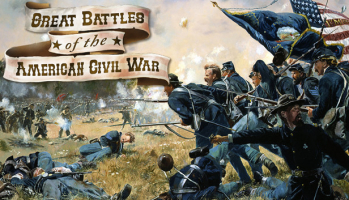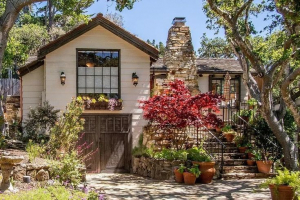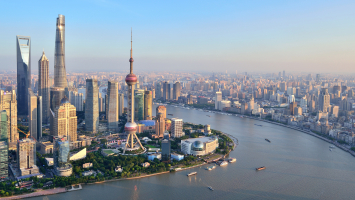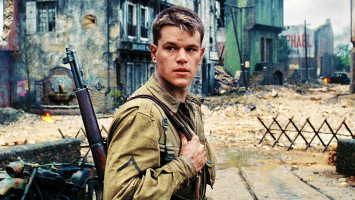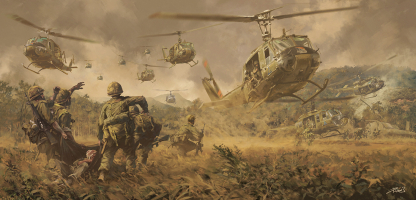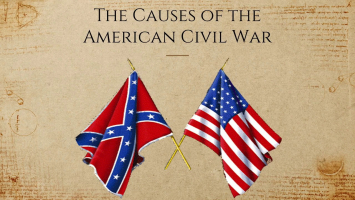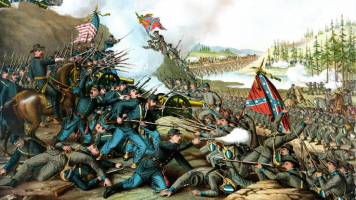Top 10 Major Battles of World War II
World War II (1939 -1945), sometimes known as the Second World War, was considered one of the bloodiest wars throughout history. Most of the world's nations, ... read more...involving all of the world's major powers, formed two competing military alliances: the Allies and the Axis powers. These clashes included over 100 million soldiers from more than 30 nations, the main nations put their whole economic, industrial, and scientific capacities behind the war effort, erasing the boundary between civilian and military resources. Here is a list of the top 10 major battles of World War II.
-
The Battle of the Atlantic, the longest military campaign, was a World War II conflict between Britain (and later the United States) and Germany due to the possession of the Atlantic sea routes. The Anglo-French coalition first forced German merchant shipping out of the Atlantic, but with the fall of France in 1914, Britain lost French naval help. The United States then supported the United Kingdom with the lend-lease program. The Axis launched a large-scale submarine offensive against coastal shipping in US waters early in 1942, and German U-boats also patrolled in force along the South Atlantic ship lanes to India and the Middle East.
Finally, the Allies succeeded but had to pay a tremendous cost. Together with the loss of 500 merchant ships, 175 warships, hundreds of aircraft, and millions of tons of supplies, about 70,000 soldiers were sacrificed. When it comes to the Axis side, 783 U-boats, 47 warships, 17 Italian submarines, and 30,000 sailors were also destroyed, with the U-boat force enduring 75% fatalities. Churchill later stated that the imminent threat of German U-boats was the only thing that scared him; killing a considerable number of them through the Battle of the Atlantic would become critical to the Allies' triumph.Time: September 3, 1939 - May 8, 1945
Location: Atlantic Ocean
Participants: Allied powers (United Kingdom, Canada, United States, Brazil, Norway) - Axis powers (Germany, Italy)
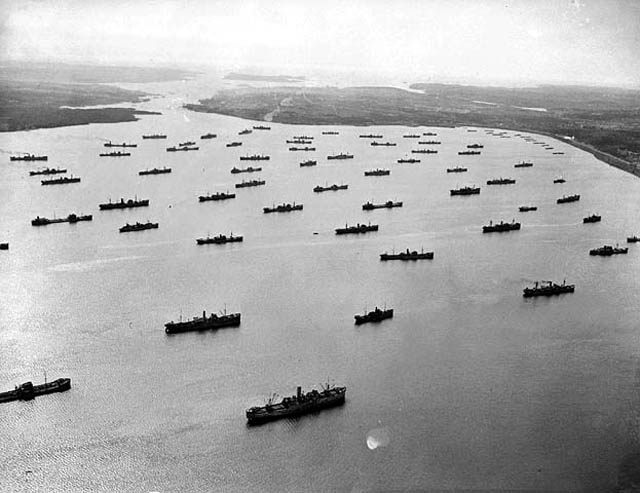
historyonthenet.com 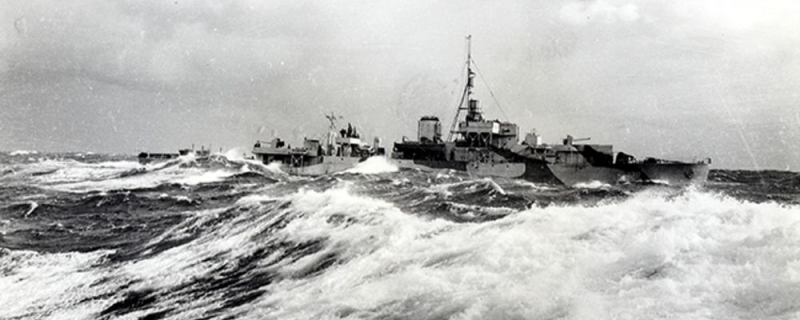
veterans.gc.ca -
During WWII, one of Japan's key ambitions was to dethrone the United States as a Pacific power as they wanted to acquire possession of the territory in east Asia and the southwest Pacific islands. Japan attempted to eliminate the United States Pacific Fleet and use Midway as a base to invade Pearl Harbor, establishing regional dominance and imposing a negotiated settlement.
The Americans were outnumbered roughly 2 to 1 at the start of the fight. The Battle of Midway began on June 4, 1942, with the US side led by Admirals Chester Nimitz, Frank Jack Fletcher, and Raymond A. Spruance and the Imperial Japanese Navy led by Admirals Isoroku Yamamoto, Chuichi Nagumo, and Nobutaka Kondo. Because of advancements in codebreaking, the US could foresee the time and location of the attack, giving them an advantage.
The Japanese plan also failed because of wrong judgments about the Americans. The four big Japanese aircraft carriers that were part of the attack on Pearl Harbor were all lost, while the United States only lost the carrier Yorktown and a destroyer. After six months, the Americans won over the Japanese, putting the Allies in an offensive position.
Date: June 3, 1942 - June 6, 1942
Location: Midway Islands
Participants: Japan - United States
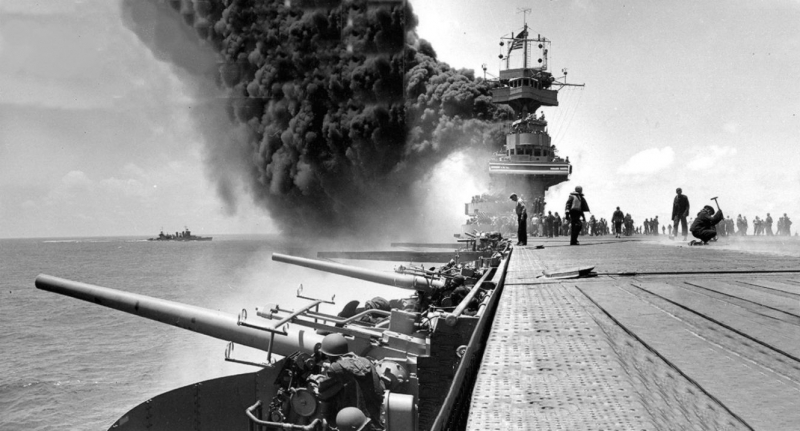
historyonthenet.com 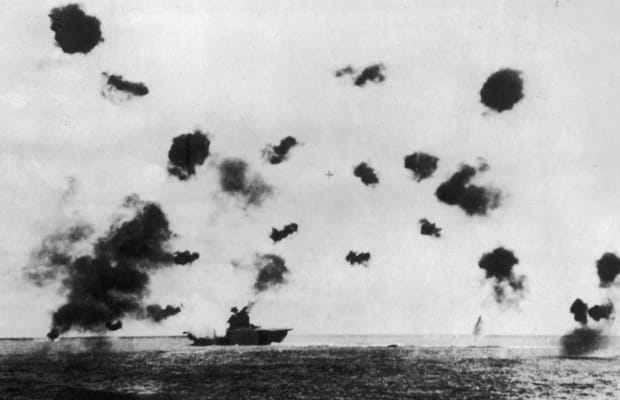
history.com -
The Battle of Stalingrad is regarded as one of the major battles of World War II. It was a pivotal event in the war, dramatically weakening Germany's armed strengths. This fight is considered the greatest of the Second World War by the Russians, and it is also known as the Great Patriotic War in Russia.
Hitler launched a military attack on southern Russia in the summer of 1942, hoping to demolish what remained of the Soviet Army and eventually conquer the Caucasus oilfields. The initial attack went successfully, and General Friedrich von Paulus of the German Sixth Army was ordered to conquer the city. Stalin, on the other hand, ordered that it be defended at all costs. Every troop and civilian available was deployed.
The Germans severely bombed Stalingrad, and the ruins became the site of months of intense street battles. The majority of the city had fallen to the Germans by October, but the Russians held to the banks of the Volga, across which they carried important reserves.
Meanwhile, Soviet General Georgi Zhukov gathered new forces on each side of the city and mounted a huge assault in November to surround and imprison von Paulus' army. Hitler forbade the Sixth Army from breaking out until February 1943, when its depleted remains surrendered. In the Stalingrad campaign, the Germans lost 500,000 men, involving 91,000 taken prisoners.
Date: August 22, 1942 - February 2, 1943
Location: Volgograd, Volga River, Russia
Participants: Germany - Soviet Union
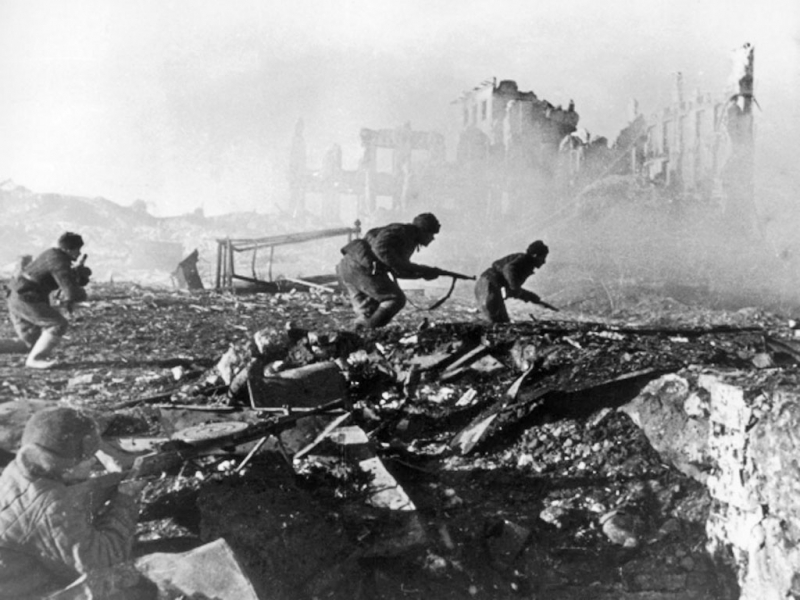
historyhit.com 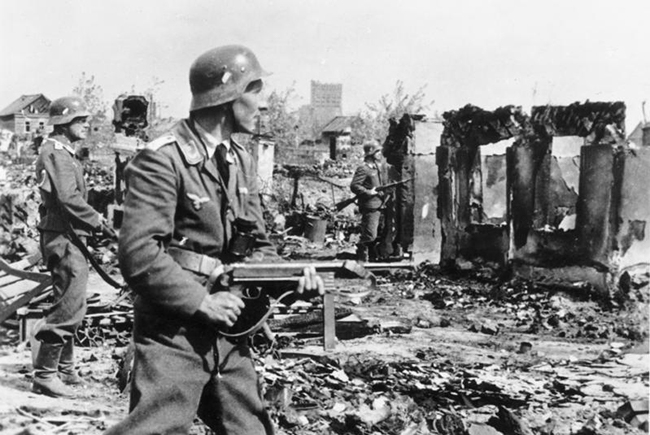
German troops cleared a roadway in Stalingrad in October 1942 - Photo: historyhit.com -
The Battle of Kursk was a major World War II Eastern Front conflict between Germany and the Soviet Union in late summer 1943. It eventually became the biggest tank battle throughout history.
After the German attack stagnated on the northern side of the salient, the Soviets began their Kursk Strategic Offensive Operation on July 12 by launching Operation Kutuzov against the German troops' rear on the same side. On 3 August, the Soviets launched Operation Polkovodets Rumyantsev against the German forces on the southern side of the salient, kicking off the second phase. By cutting off and surrounding the forces they expected to be in the Kursk salient, the Germans aimed to reduce the Soviet offensive potential for the summer of 1943.
It was also believed that many Soviet prisoners would be caught and utilized as slave labor in Germany's munitions sector. The Soviet government was aware of German plans, thanks in part to British intelligence's Tunny intercepts. Knowing the offensive would hit on the neck of the Kursk salient, the Soviets developed a defense to degrade the German armored spearhead months in advance. Hitler called off the Kursk operation after barely a week, in order to shift soldiers to Italy.
This was the first time a German military attack was prevented before it could break through enemy lines throughout the war.
Date: July 5, 1943 - August 23, 1943
Location: Kursk Russia
Participants: Germany - Soviet Union
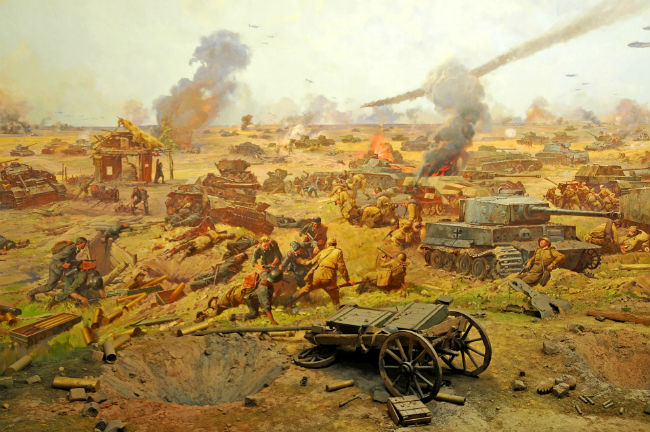
historyhit.com 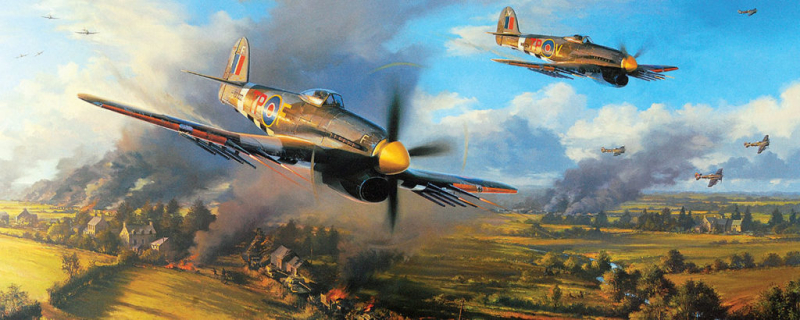
historynet.com -
The Battle of Britain was a significant fight during WWII. Germany had controlled most of Europe, including France, and the only large country left for them to capture was Britain.
As a result, Germany intended to conquer Great Britain. To prepare for the attack, the Germans invaded cities and army defenses on England's southern coast. They quickly realized that Britain's Royal Air Force would be a problem, so they chose to attack the air force instead, with the goal of defeating it. As a response, they commenced major bomber strikes against airport runways, airfields, harbors, aircraft manufacturers, and British radar sites in August 1940.
Over the next three months (until October 31st), the Royal Air Force destroyed 792 planes and killed over 500 pilots. As the German air force understood that it was not easy to defeat them, the number of raids started to decline toward the end of this campaign.
On September 15, the British decided to resist another huge German offensive. Even though the Germans commanded more planes and pilots, the British had the advantage of fighting on home ground and having radar. Due to high casualties, the Luftwaffe was compelled to reduce back operations. Hitler's plans for an invasion were postponed permanently. This was one of Britain's most significant victories, demonstrating that air power alone could win a major war.
Date: July 1940 - September 1940
Location: English Channel - France - United Kingdom
Participants: Germany - United Kingdom
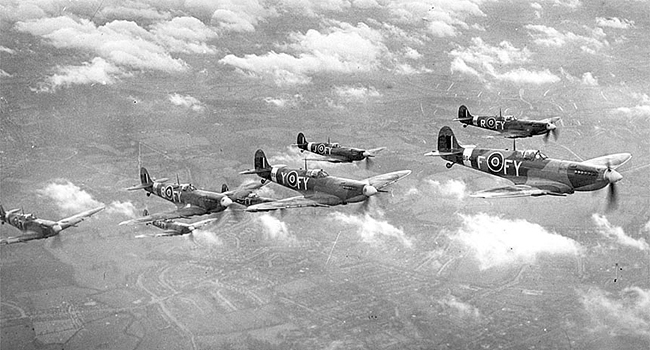
historyhit.com 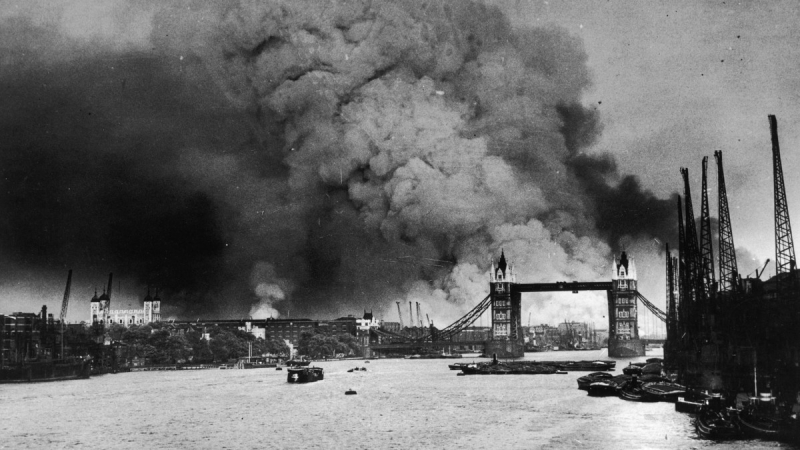
Germany bombarded London - Photo: history.com -
The Second Battle of Kharkov, also known as Operation Fredericus, was an Axis defense in the territory of Kharkov (now Kharkiv) against the Red Army Izium bridgehead attack on the Eastern Front from May 12 to May 28, 1942. It aimed to destroy the Izium bridgehead over Seversky Donets, also known as the "Barvenkovo bulge", which served as a staging ground for the Soviet invasion.
On May 12, 1942, Soviet troops led by Marshal Semyon Timoshenko launched an attack on the German 6th Army from a salient developed during the winter counterattacks. The Kharkov battle was a new Soviet effort to increase their key strategy after a winter mitigate that drove German soldiers away from Moscow. It exhausted the Red Army's supplies but failed to achieve a substantial element of surprise. There were optimistic signals for the Red Army at first, but the offensives were halted by German counterattacks.
Joseph Stalin and numerous staff officers made crucial mistakes by underestimating the capabilities of the 6th Army and overestimating their own strength. This effectively shut off the advancing Soviet forces from the remainder of the front. The conflict resulted in about 300,000 Soviet losses and 20,000 for the Germans and their allies.
Date: May 12, 1942 - May 28, 1942
Location: Izium/Barvenkovo area, Kharkiv Oblast, Ukrainian SSR, Soviet Union
Participants: Germany - Soviet Union
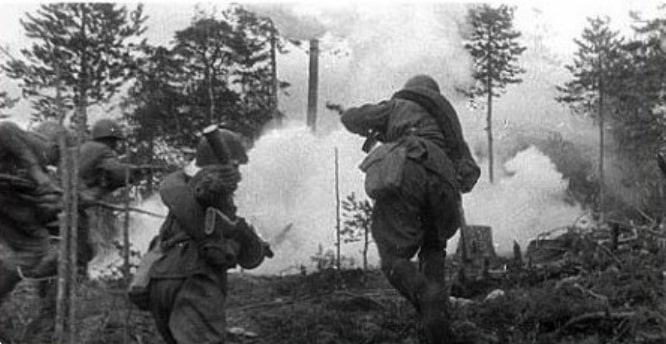
ancienthistorylists.com 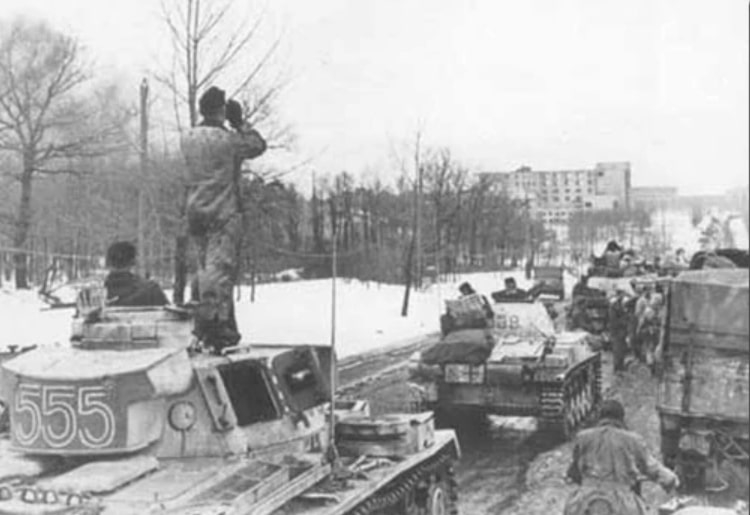
German tanks attacked Kharkov - Photo: ww2-history.fandom.com -
During World War II, the Battle of Moscow was a military campaign consisting of two periods of strategically crucial fight in a 600 km sector of the Eastern Front. It occurred from October 1941 to January 1942.
After four million deaths on the Soviet side, the German force had moved to within 200 miles of Moscow, one of the key military and political targets for Axis forces in their conquest of the Soviet Union. This marked the start of Operation Typhoon, an operation aimed at seizing the Soviet capital and bringing the conflict to a close. But the reality was far from what either party had anticipated.
The Soviet Union had a massive but poorly structured army. The Germans, on the other hand, could have won any war on the earth with their skill and weapons. The Soviet defense was able to stave off the Germans due to the frigid weather and inability to transport supplies to the Panzer Army. Poor-quality Russian roads had destroyed almost 40% of the German truck fleet, and the Germans were damaged and depleted by the time they were within 15 miles (24 kilometers) of Moscow.
The Soviets fortified the city with three defensive belts, additional armies, and men from the Siberian and Far Eastern Military Districts. As the German attack came to a standstill, a Soviet strategic counter-offensive and smaller-scale attacks pushed the German troops back to positions surrounding the cities of Oryol, Vyazma, and Vitebsk, virtually encircling three German divisions. It was a severe blow for the Germans, and it effectively ended their belief in a quick German victory over the Soviet Union.
Date: October 2, 1941 - January 7, 1942
Location: Moscow Oblast, Russian SFSR, Soviet Union
Participants: Germany - Soviet Union
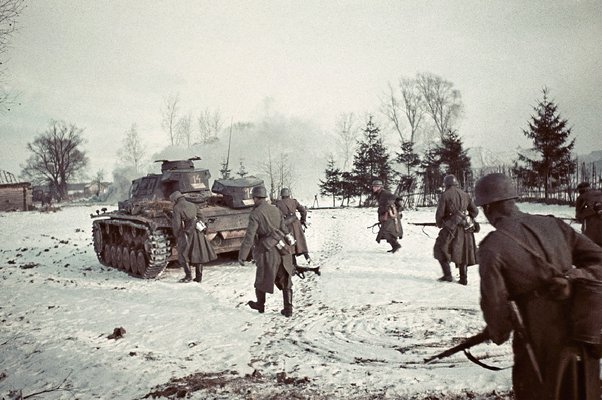
quora.com 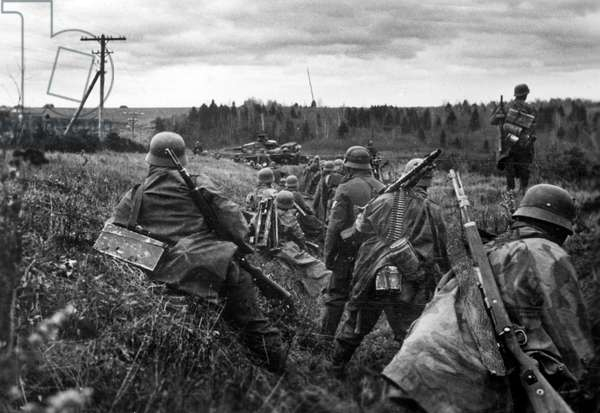
bridgemanimages.com -
The Battle of Berlin, also known as the Fall of Berlin and recognized as the Berlin Strategic Offensive Operation by the Soviet Union, was one of the final significant combats of World War II's European theatre.
The Red Army stopped on a line 60 kilometers east of Berlin following the Vistula-Oder Offensive of January-February 1945. The German defensive strategy against the Soviet onslaught was known as Operation Clausewitz. Following the commencement of the Soviet offensive on April 16, the city was attacked from the east and south, while a third force fought the Germans from the north.
The Soviet forces successfully surrounded the city, and on April 20, 1945, Hitler's birthday, the 1st Belorussian Front began bombarding the city center, while the 1st Ukrainian Front moved to the southern suburbs. Before the battle finished, Hitler and a few of his followers committed suicide.
On May 2, the city surrendered, but fighting continued to the northwest, west, and southwest of the city until May 8, when the war in Europe ended. Following this fight, Berlin was split into four sections as agreed upon by the Allies.
Date: April 16, 1945 - May 2, 1945
Location: Berlin, Nazi Germany
Participants: Germany - Soviet Union
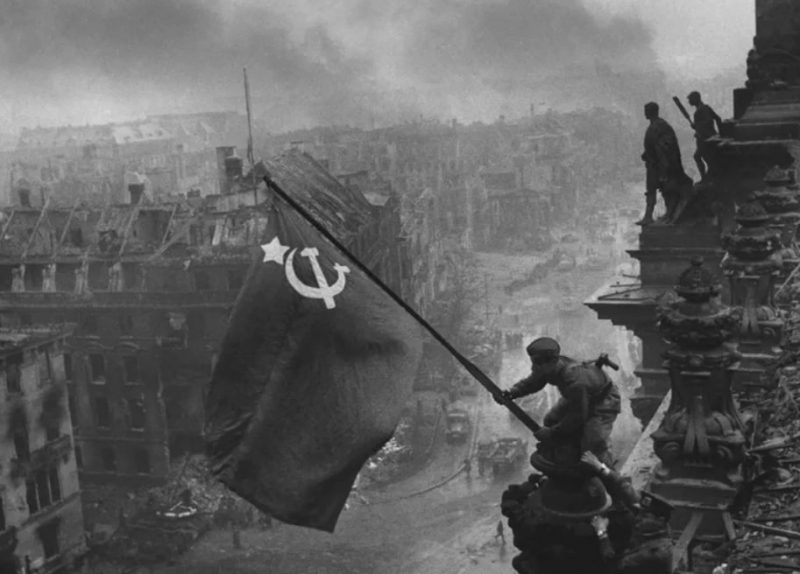
Soviet soldiers raised the Red Flag on the Reichstag -Photo: thoughtco.com 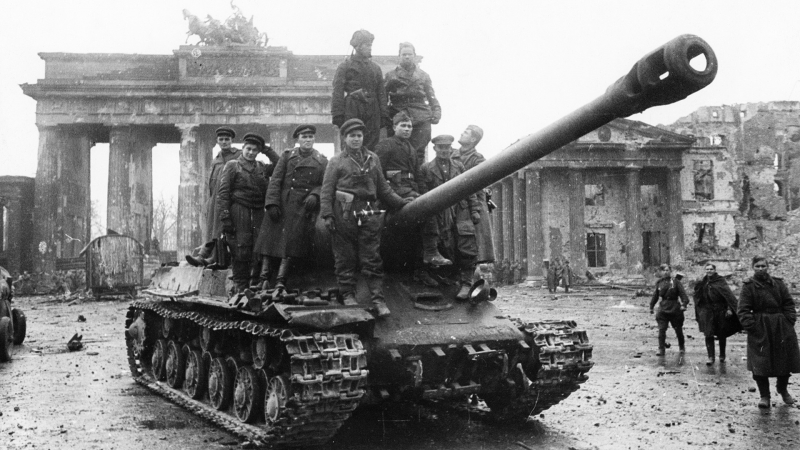
rbth.com -
The Pearl Harbor attack was a surprise military campaign launched by the Imperial Japanese Navy Air Service against the United States at the naval base at Pearl Harbor in Honolulu, Territory of Hawaii, just before 8:00 a.m. on Sunday, December 7, 1941. The Japanese military leadership called the offensive the Hawaii Operation, Operation AI, and Operation Z.
This battle was a turning point in Japan's deteriorating ties with the United States. Once the US navy was out of the way, the Japanese would be able to capture all of Southeast Asia and the Indonesian archipelago.
A Japanese fleet of six aircraft carriers, two battleships, three cruisers, and eleven destroyers traveled 275 miles north of Hawaii on November 26. From here, around 360 planes were fired for the last attack. Four US Navy battleships were sunk, while four more were destroyed. Furthermore, three cruisers, three destroyers, an anti-aircraft training ship, and one minelayer were lost.
The attack took the lives of 2,403 Americans and injured 1,178 more. This surprise strike horrified the American people, prompting the United States to enter the Second World War in both Europe and the Pacific. The United States decided to declare war on Japan on December 8, 1945. The United States was a neutral nation at the time, but the attack forced it to enter World War II.
Date: December 7, 1941
Location: Oahu, Territory of Hawaii, US
Participants: United States - Empire of Japan
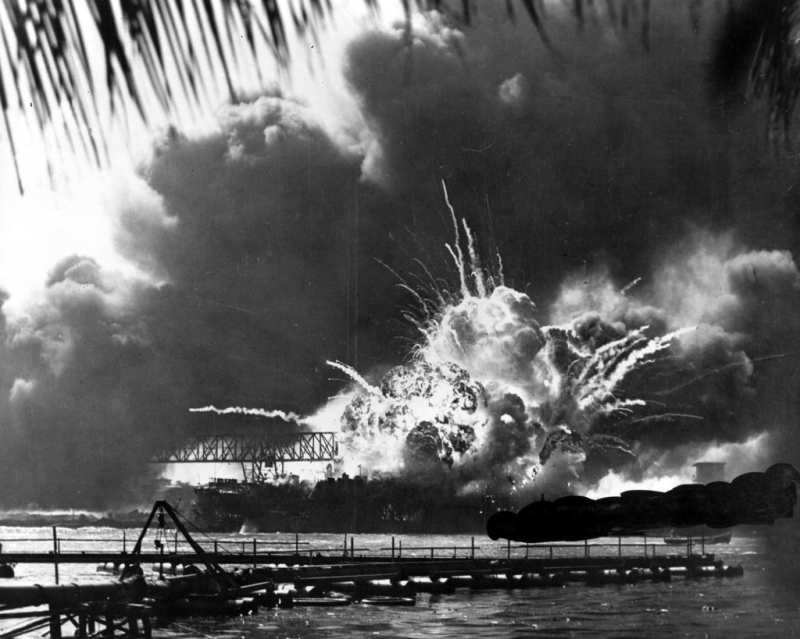
nytimes.com 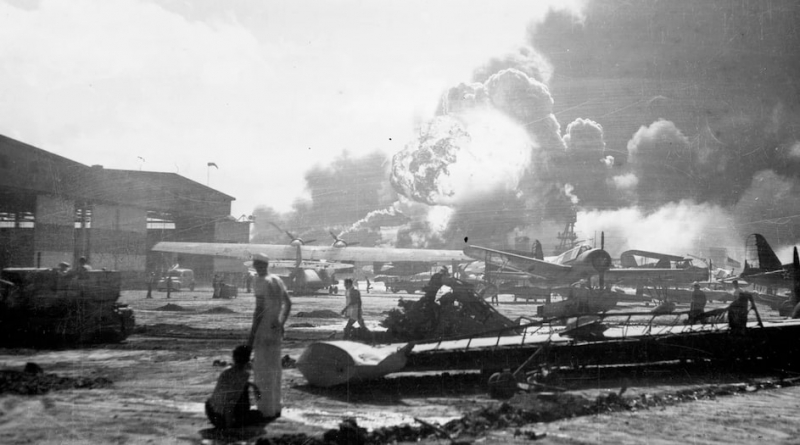
Sailors stand among the damaged planes, watching the USS Shaw explode - Photo: kids.nationalgeographic.com -
The Battle of France, also known as the Western Campaign (Westfeldzug), the French Campaign, and the Fall of France, was a Second World War German attack on France, Belgium, Luxembourg, and the Netherlands. Following the German invasion of Poland on September 3, 1939, France made a declaration of war on Germany. France launched the modest Saar Offensive in early September 1939 and withdrew to its starting positions by mid-October.
German armies defeated the Allies and captured France, Belgium, Luxembourg, and the Netherlands in six weeks, beginning on May 10, 1940. Italy also attempted to attack France when it entered the war on June 10, 1940. By June 6, 1944, the German land offensive on the Western Front had ended.
On the German side, there were two major operations during the Battle of France. The armored German units of Fall Gelb (Case Yellow) broke through the Ardennes along the Somme Valley, shutting off and enclosing the Allied units heading to Belgium. Following the evacuation of the Belgian and French forces to the sea, the British withdrew their own men as well as several French divisions from Dunkirk in Operation Dynamo. On June 5, when the British forces had withdrawn, Fall Rot (Case Red) began. The remaining French divisions resisted but were quickly defeated. On June 14, German forces invaded Paris.
Date: May 10, 1940 - June 25, 1940
Location: Low Countries, France
Participants: Germany - France
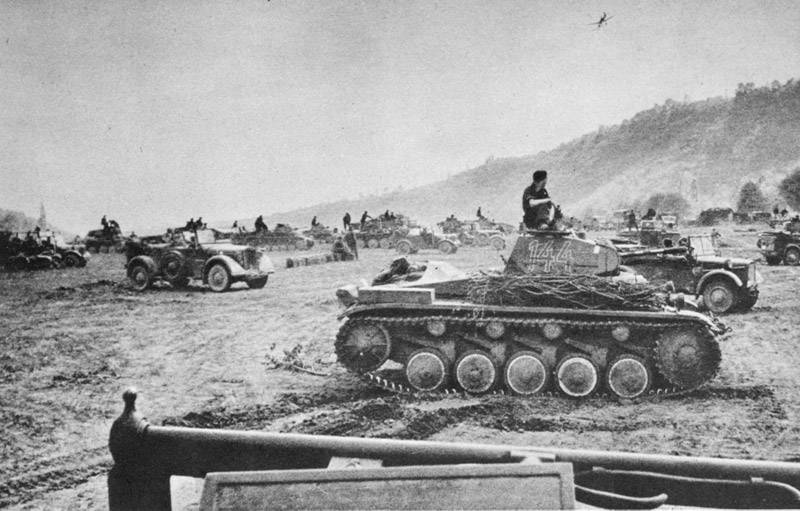
rafmuseum.org.uk 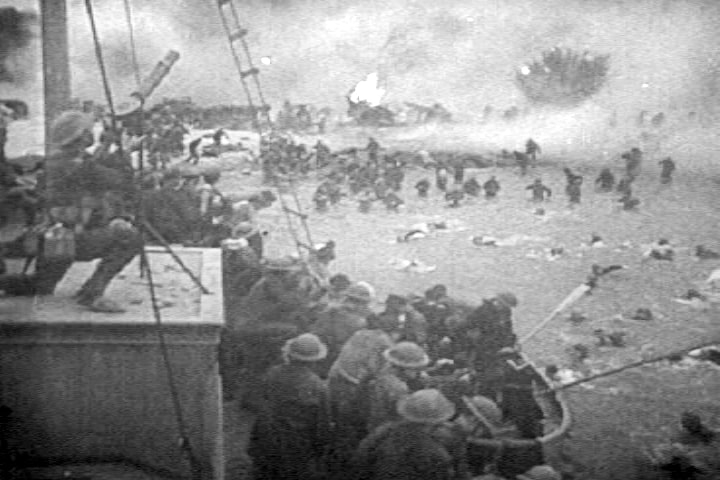
military-history.fandom.com












